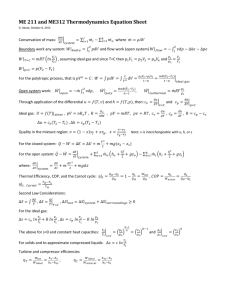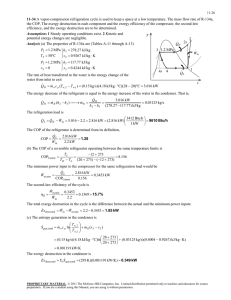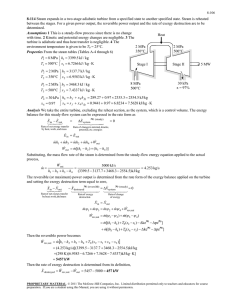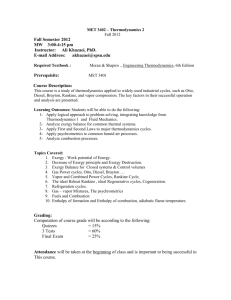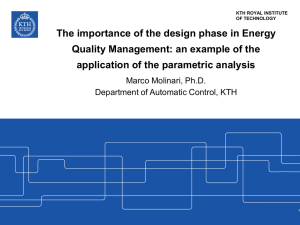Before_You_Begin
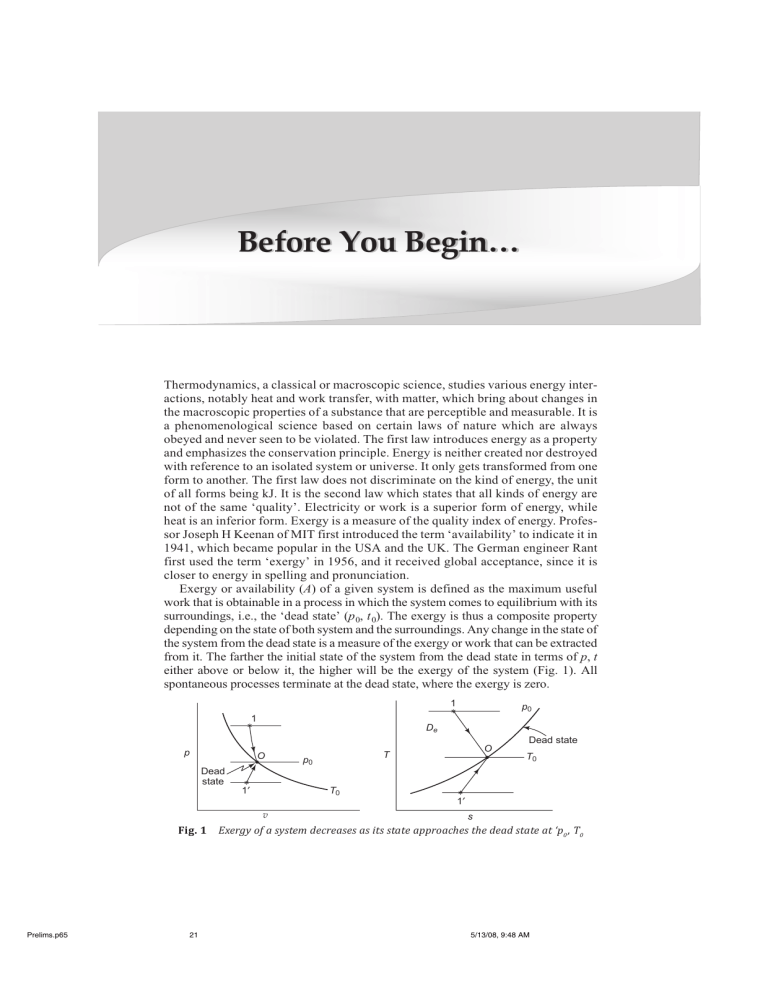
Prelims.p65
Thermodynamics, a classical or macroscopic science, studies various energy interactions, notably heat and work transfer, with matter, which bring about changes in the macroscopic properties of a substance that are perceptible and measurable. It is a phenomenological science based on certain laws of nature which are always obeyed and never seen to be violated. The first law introduces energy as a property and emphasizes the conservation principle. Energy is neither created nor destroyed with reference to an isolated system or universe. It only gets transformed from one form to another. The first law does not discriminate on the kind of energy, the unit of all forms being kJ. It is the second law which states that all kinds of energy are not of the same quality. Electricity or work is a superior form of energy, while heat is an inferior form. Exergy is a measure of the quality index of energy. Professor Joseph H Keenan of MIT first introduced the term availability to indicate it in
1941, which became popular in the USA and the UK. The German engineer Rant first used the term exergy in 1956, and it received global acceptance, since it is closer to energy in spelling and pronunciation.
Exergy or availability ( A ) of a given system is defined as the maximum useful work that is obtainable in a process in which the system comes to equilibrium with its surroundings, i.e., the dead state ( p
0
, t
0
). The exergy is thus a composite property depending on the state of both system and the surroundings. Any change in the state of the system from the dead state is a measure of the exergy or work that can be extracted from it. The farther the initial state of the system from the dead state in terms of p , t either above or below it, the higher will be the exergy of the system (Fig. 1). All spontaneous processes terminate at the dead state, where the exergy is zero.
1 p
0
1
D e p
O p
0
T
O
Dead state
T
0
Dead state
1 ¢ T
0
1 ¢ v s
Fig. 1 Exergy of a system decreases as its state approaches the dead state at p
0
, T
0
21 5/13/08, 9:48 AM
NNEE Nomenclature
The maximum work or exergy of a system per unit mass in a steady flow process is given by the decrease in exergy is a = ( h T
0 s +
V
2
2
+ gz ) ( h
0
T
0 s
0
+ gz )
If subscripts 1 and 2 denotes the states of the system entering and leaving a CV ,
W max
= a
1
1
a
b
2
= ( h
1
T
0 s
1
) ( h
2
T
0 s
2
)
= b
2 where b is the specific Keenan function. Here KE, PE terms are neglected.
The exergy of a closed system or the availability in a nonflow process is
A = W max
= ( E E
0
) + p
0
( V V
0
) T
0
( S S
0
)
= ( U +
MV
2
2
+ mgz ) ( U
0
+ mgz
0
) +
If KE and PE terms are neglected, and for unit mass, it is p
0 a = u u
0
+ p
0
( v v
0
) T
0
( s s
0
).
( V V
0
) T
0
( S S
0
)
Irreversibility and GouyStodola Theorem
The actual work done by a system is always less than the idealized reversible work, and the difference between the two is called the irreversibility.
I = W max
W
This is also called degradation or dissipation.
In a nonflow process between two equilibrium states, when the system exchanges heat only with the environment
I = [( U
1
U
2
) T
0
( S
1
S
2
)] [( U
1
U
2
) + Q ]
= T
0
( S
2
S
1
) Q = T
0
( D S ) sys
+ T
0
( D S ) surr
= T
0
( D S ) univ
= T
0
S gen
Since S gen
is always positive, I > 0.
Similarly, for a steady flow process
I = W max
W
= [( B
1
+ mV
2
1
2
+ mgz
1
) ( B
2
+ mV
2
2
2
+ mgz
2
)]
[( H
1
+ mV
2
1
2
+ mgz
1
) ( H
2
+ mV
2
2
2
= T
0
( S
2
S
1
) Q = T
0
( D S ) sys
+ T
0
( D S ) surr
+ mgz
2
)]
= T
0
( D S ) univ
= T
0
S gen
.
The quantity T
0
S gen
represents a decrease in exergy or exergy destruction.
Prelims.p65
22 5/13/08, 9:48 AM
Nomenclature NNEEE
The Gouy-Stodola theorem states that the rate of loss of exergy in a process is proportional to the rate of entropy generation,
º
I = T
S
º gen
, or
0
S
º gen
A thermodynamically efficient process would involve minimum exergy loss with minimum rate of entropy generation.
When a closed system is allowed to undergo a spontaneous change from the given state to the dead state, the exergy is completely destroyed without producing any useful work.
Exergy Balance for a Closed System
For a closed system, exergy transfer occurs through heat and work interactions (Fig. 2).
1st law E
2
E
1
=
2nd law S
2
S
1
2
1
Ú dQ W
1 2
2
1
Ú dQ
T
= S gen
(1)
1 Æ 2
Q
T s
Boundary or T
0
( S
2
S
1
) T
0
Ú
2
1 dQ
T
=
From equations (1) and (2),
T
0
S gen
E
2
E
1
T
0
( S
2
S
1
) =
(2)
1
Ú
2 dQ W
1 2
= T
0
2
1
Ú dQ
T
T
0
S gen
W
1–2
Fig. 2
Ú
1
2
Ê
1 -
T
0
T
ˆ
¯ dQ W
1 2
T
0
S gen
A
2
A
1
= Ú
2
Ê
1 -
T
0
T
ˆ
¯ dQ [ W
1
1
For an isolated system), the exergy balance gives
2
p
0
( V
2
V
1
) T
0
S gen
(3)
A
2
A
1
= T
0
S gen
= I (4)
Since I > 0, the only processes allowed by the second law are those for which exergy of the isolated system decreases.
The exergy of an isolated system can never increase. It is the counterpart of the entropy principle which states that entropy of an isolated system can never decrease.
Similarly, for a steady flow process,
Ê
1
-
ˆ s
Exergy in
+ a f
1
-
W m
a f
2
=
I m
Exergy out Exergy loss
5/13/08, 9:48 AM Prelims.p65
23
NNEL Nomenclature
Second-Law Efficiency
By first law,
Energy input Energy output = Energy loss
First law efficiency, h
I
=
Energy output
Energy input
By second law,
Exergy input Exergy output = Exergy loss or Irreversibility
Second law efficiency, h
II
=
Exergy output
Exergy input
It can also be defined as h
II
Since W max
=
W
W max
=
A min
A
(for a cycle)
= A = Q
1
Ê
1 -
T
0
T
1
ˆ
¯ h
II
=
W
Q
1
Ê
1 -
T
0
T
1
ˆ
¯
= h
I h carnot
If work is involved, A min
= W (desired), and if heat is involved, A min
= Q
Ê
1 -
T
0
T
1
ˆ
¯
.
Prelims.p65
24 5/13/08, 9:48 AM

